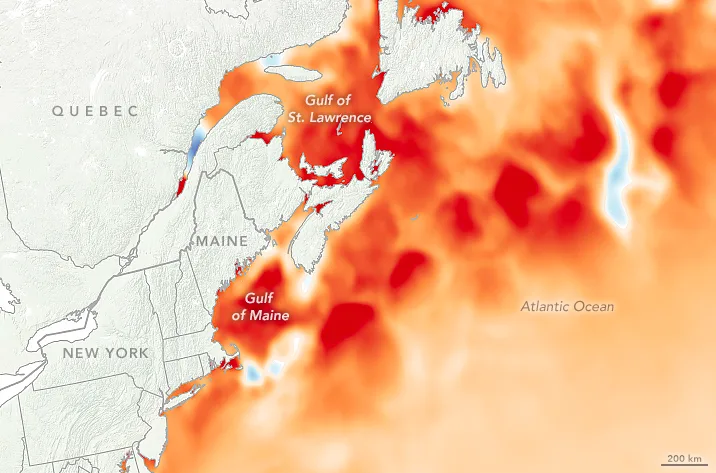
The Gulf Stream is migrating closer to Canada, and scientists are concerned
Ocean waters that are several degrees warmer than normal can have devastating impacts on ecosystems and fisheries.
North-central and eastern Canada experienced some of the most extreme temperature anomalies on Earth, along with parts of Russia and southeastern Europe, in the past. Temperatures that were 3–6°C above average in Atlantic Canada occurred and scientists observed the lowest Arctic sea ice extent on record in December 2010.
Fisheries significantly suffered from the harsh temperature anomalies and researchers have spent years investigating the causes of this unusual warmth. A study published in Communications Earth & Environment reports that the abrupt warming from 2009 to 2010 in the Northwest Atlantic is linked to the Gulf Stream migrating closer to Newfoundland.
The Gulf Stream transports warm waters from the Gulf of Mexico northeastward past Atlantic Canada towards Europe. This tepid current crashes into the icy waters that the Labrador Current carries down from the Arctic Ocean, creating a unique environment that supports diverse wildlife and the fisheries industry.
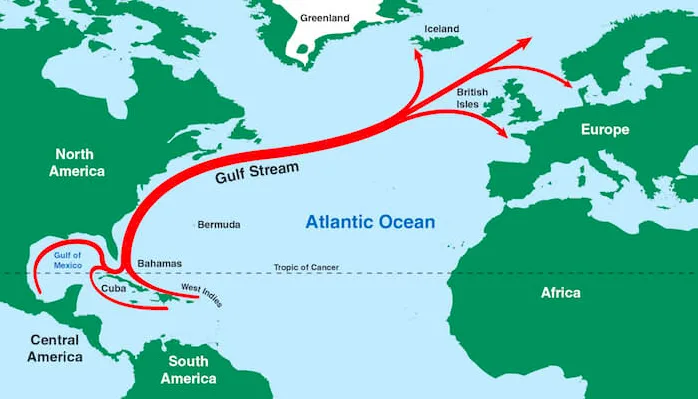
The Gulf Stream brings warm water from the Gulf of Mexico into the Atlantic Ocean. (NOAA)
However, warming temperatures are knocking these oceanic circulations off balance and the study’s climate models reveal that the northward migration of the Gulf Stream has been blocking the Labrador Current from transporting cold, oxygen-rich water to the North American shelf.
Sea surface height data revealed that the Gulf Stream migrated closer to the Grand Banks in the summer of 2008, which has experienced unusually high sea levels ever since. The Gulf Stream’s relocation has remained in place for over a decade and the study says that the average sea surface height increased by 10.8 cm from 2009–2019 compared to the average height seen from 1993–2007.
The study says that ocean temperatures in the Northwest Atlantic responded to the sudden sea level rise in 2008. The Laurentian Channel, located between Nova Scotia and Newfoundland, suddenly experienced unusually warm temperature anomalies in the spring of 2009, which persisted through 2018.
By December 2010, warmer subsurface waters were observed throughout the entire Northwest Atlantic Shelf from the Laurentian Channel to the Great South Channel, which is southeast of Massachusetts.

Fishing village in Peggy's Cove, Nova Scotia. Credit: Saffron Blaze. Moment. Getty Images
According to the study’s data analysis, the 2008 ocean circulation shift at the Grand Banks likely triggered unusually warming temperatures along the Northwest Atlantic Shelf, which demonstrates the cascading effects that warming in one ecosystem has on another.
Scientists say that the blocking effect the Gulf Stream is having on the Labrador Current is key to understanding how and why temperature anomalies in the Northwest Atlantic are occurring.
“This mechanism explains why the most recent decade has been the hottest on record at the edge of the Northeast United States and Canada, as the delivery system of cold water to the region got choked off by the presence of the Gulf Stream,” said Afonso Gonçalves Neto, the study’s lead author, in a press release.
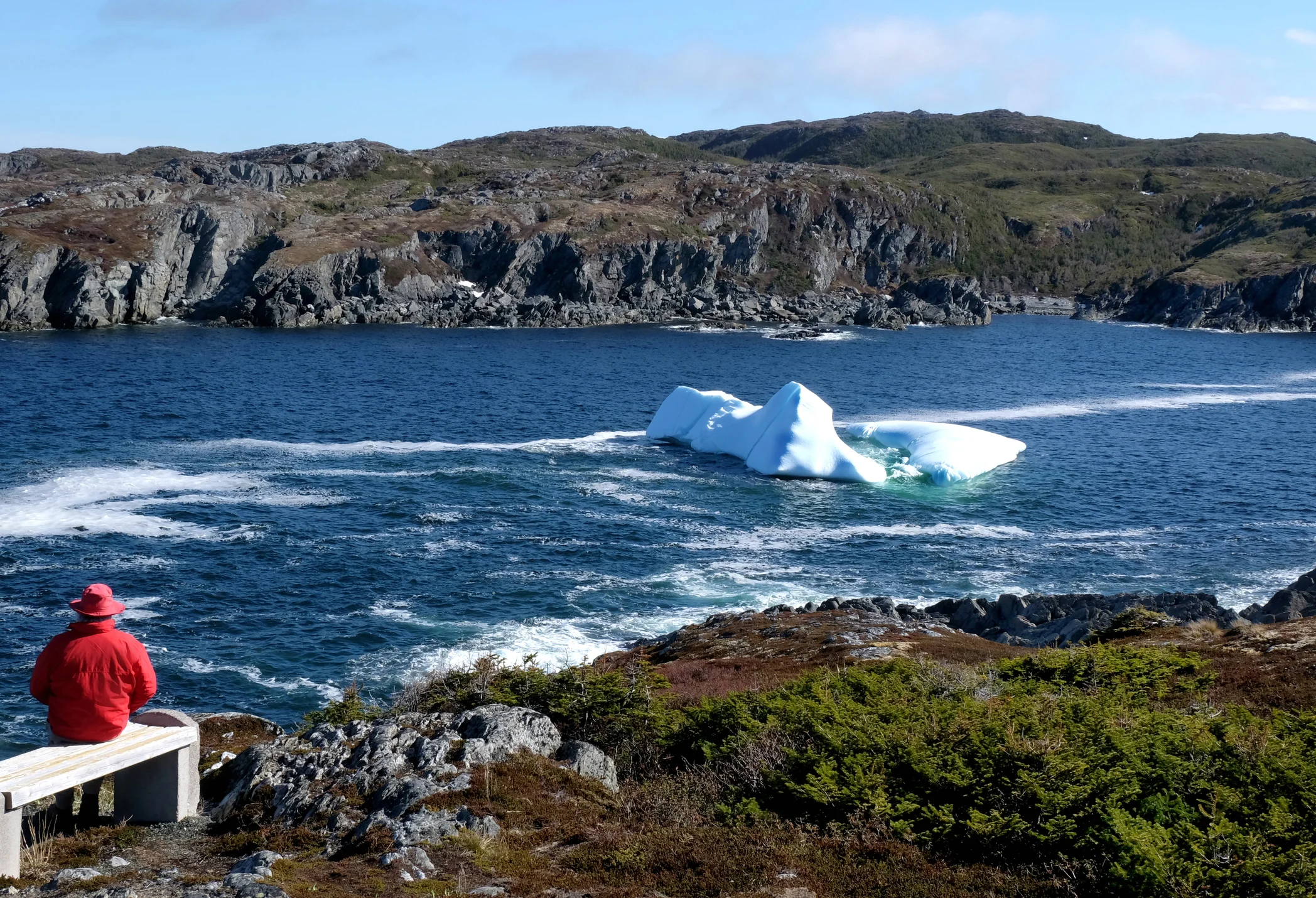
Iceberg watching in Great Brehat Bay, Newfoundland. Icebergs flow past Atlantic Canada as they are transported by the Labrador Current. Credit: Sandra Leidholdt. Moment. Getty Images
Researchers say that the changing ocean circulation patterns will have apparent impacts on the fisheries industry and on stakeholders that rely on marine biodiversity.
“When the Gulf Stream blocks the Labrador Current, temperatures rise and oxygen concentrations plunge along much of the eastern North American shelf. These changes can directly impact temperature-sensitive fish and invertebrate species: warm-tolerant species from the south may establish themselves in Atlantic Canada, cold-loving species may move further northward and offshore,” Joe Langan, a contributor to the study, explains to The Weather Network.
“Shellfish that are already living at the edge of their oxygen needs may decline. The movement patterns, spawning timing, and productivity of species throughout the ecosystem may change in different ways, creating new opportunities and challenges for fisheries managers and fishers alike.”
ABNORMALLY WARM OCEAN WATERS IN THE 1970s
Scientists say that Atlantic Canada has endured abnormally warm ocean temperatures well before the extreme heat event in 2009–2010. Ocean circulation patterns abruptly shifted near the Grand Banks, Newfoundland in the 1970s, which the researchers speculate could be due to a slowdown of the Atlantic Meridional Overturning Circulation (AMOC).
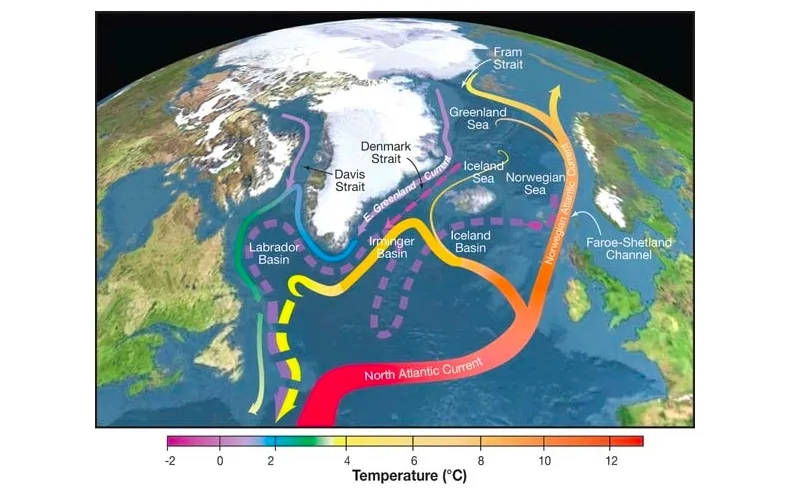
A portion of the Atlantic meridional overturning circulation. (R. Curry, Woods Hole Oceanographic Institution/ Wikimedia Commons) (CC BY 3.0)
The AMOC is one of the major ocean current systems that circulates and redistributes heat across the planet. Concerningly, scientists have observed that the AMOC has considerably weakened in the past 150 years. One of the climate models in the study found that warming events in the Northwest Atlantic are strongly correlated with times when the AMOC was unusually weak.
“We still don’t know what caused the abrupt shift of the circulation near the Grand Banks inferred in the 1970s and observed in 2008, or whether this is the new normal for the circulation and the temperatures of the northeast shelf. There are modeling studies that suggest that a slowdown of the AMOC can cause the types of changes we observed, but the connection remains to be made in the observational record,” Jamie Palter, co-author of the study, stated in the press release.
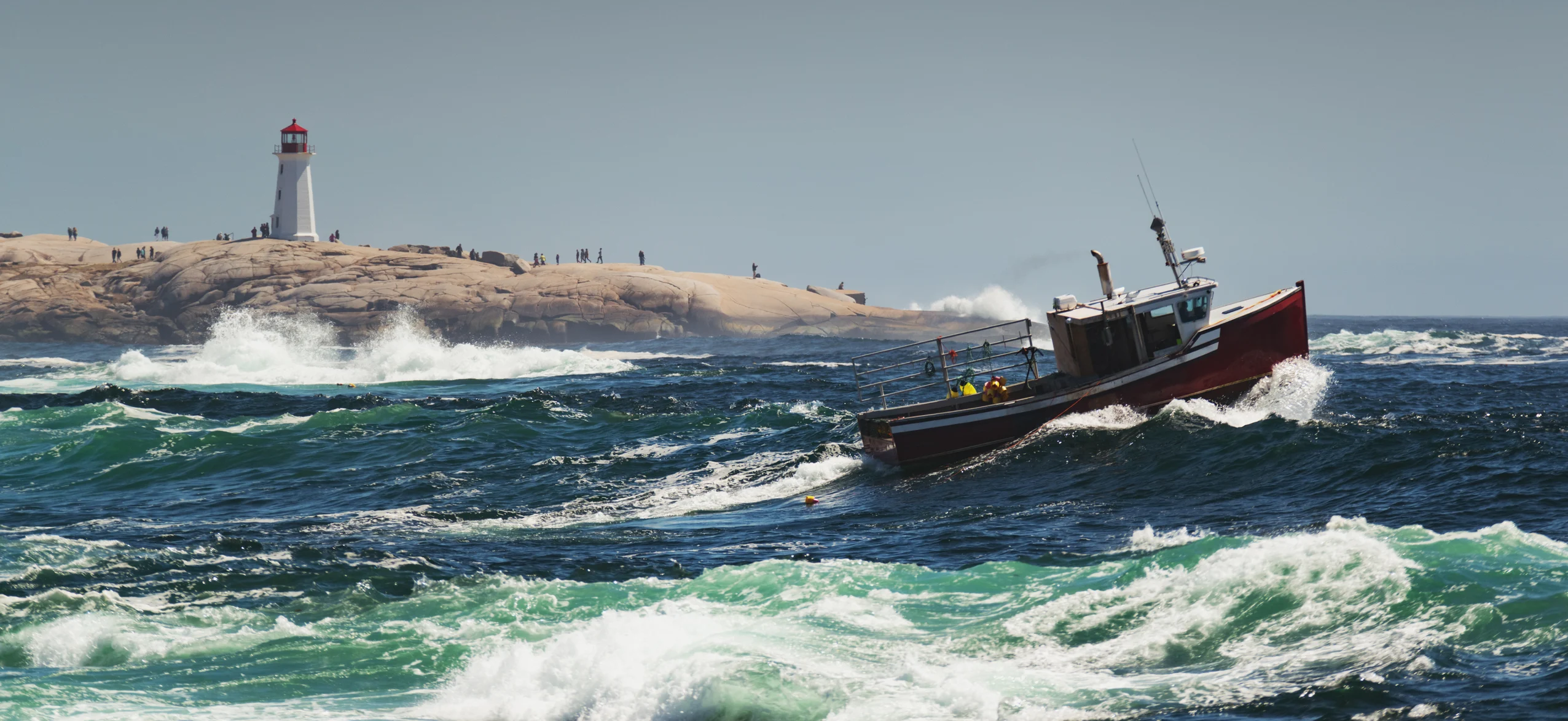
Lobster boat hauls traps in heavy surf near Peggy's Cove Lighthouse. Credit: shaunl. E+. Getty Images
The researchers say that increasing amounts of greenhouse gas emissions will continue to slow down the AMOC and lead to warming in the Northwest Atlantic, which is “expected to increasingly alter historically exploited stocks in this region” and require “adaptation of fisheries risk assessments to maintain resilience in a changing climate.”
The study concludes that monitoring sea levels at the Grand Banks would enable scientists to predict abnormal warming events up to one year in advance, which could help stakeholders better mitigate the risks and impacts to ecosystems and fisheries.
Thumbnail credit: NASA












